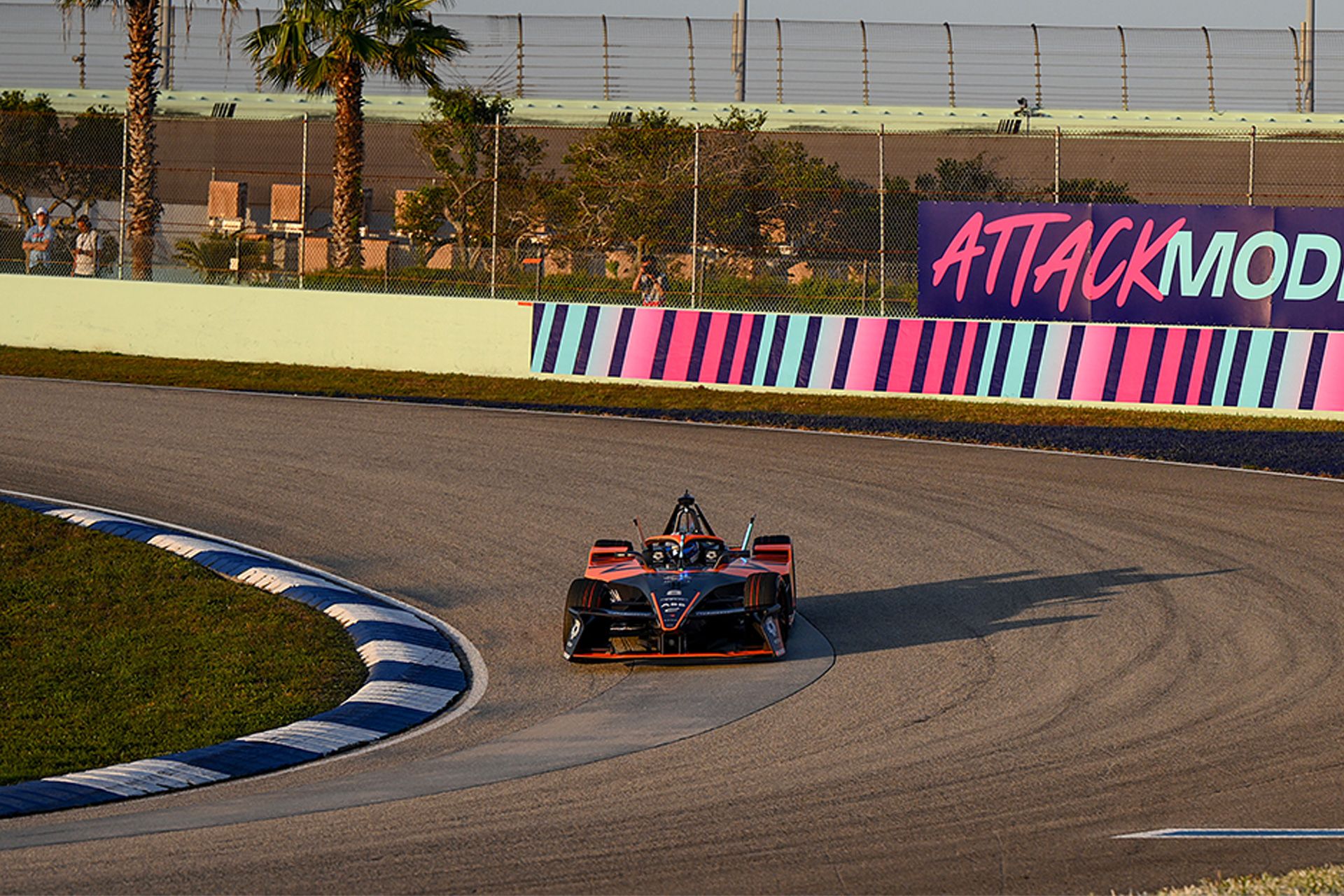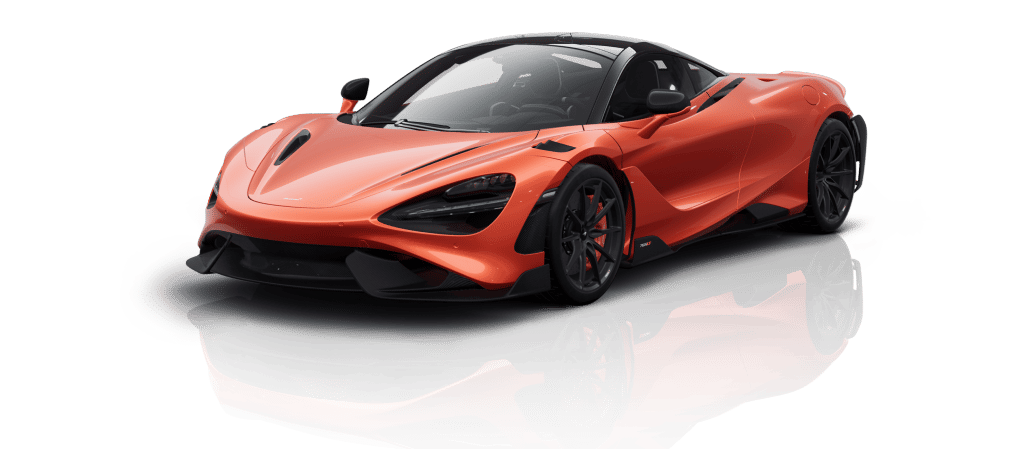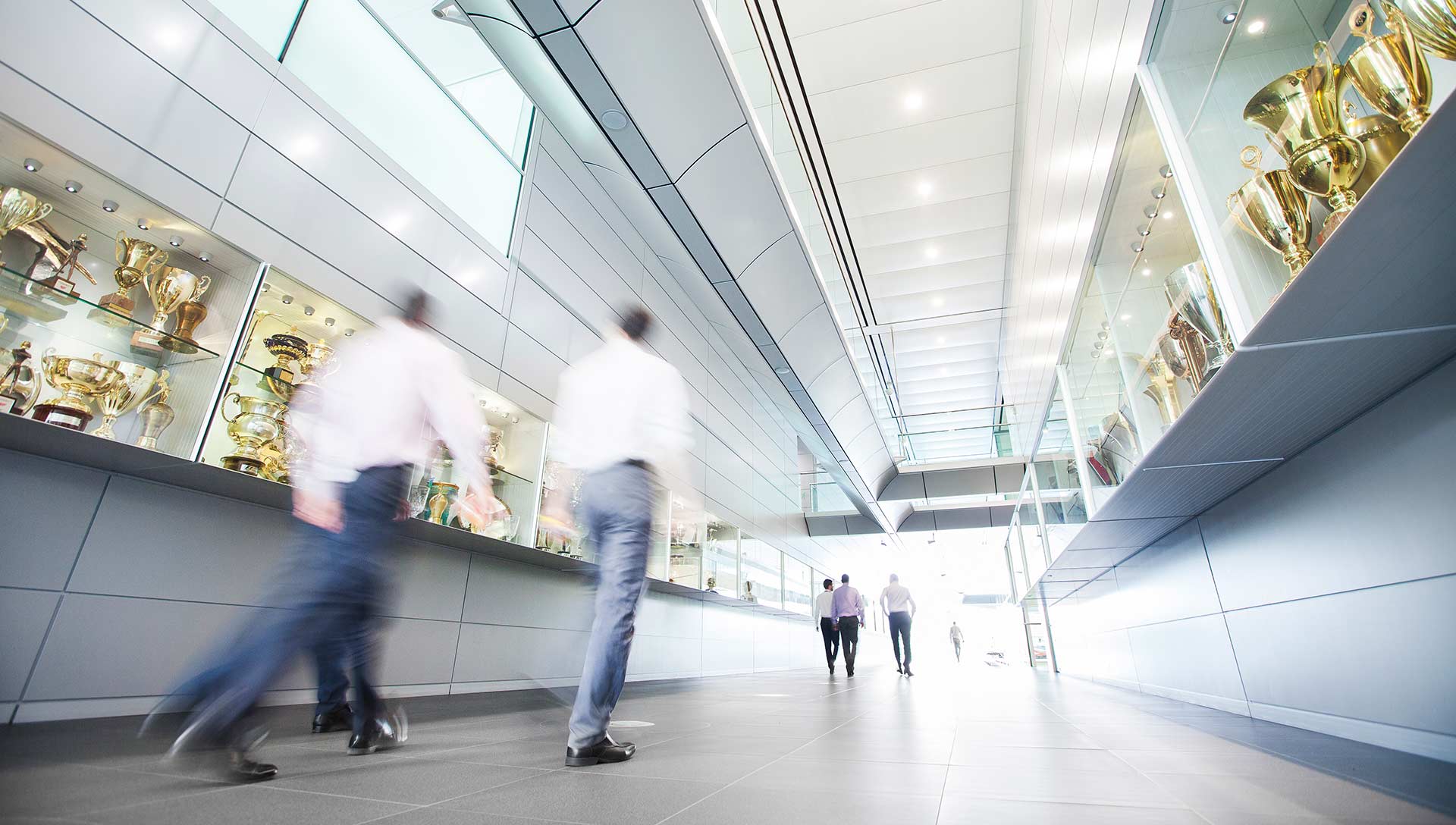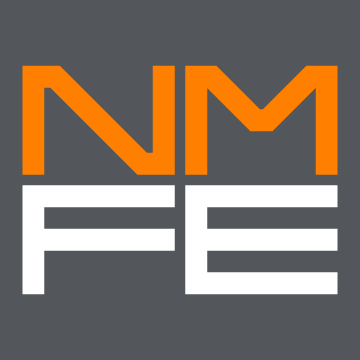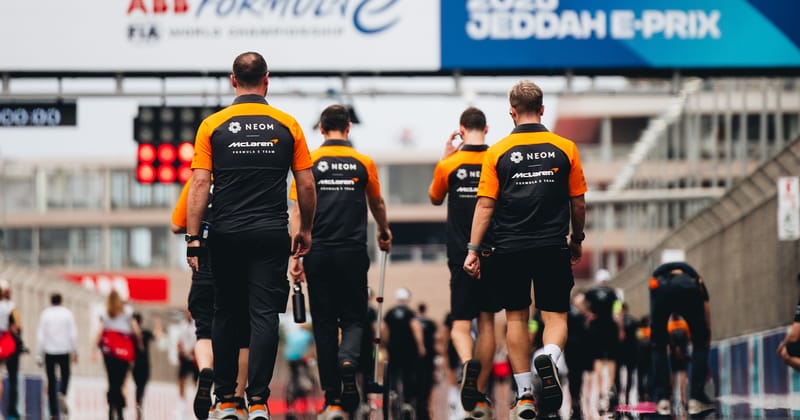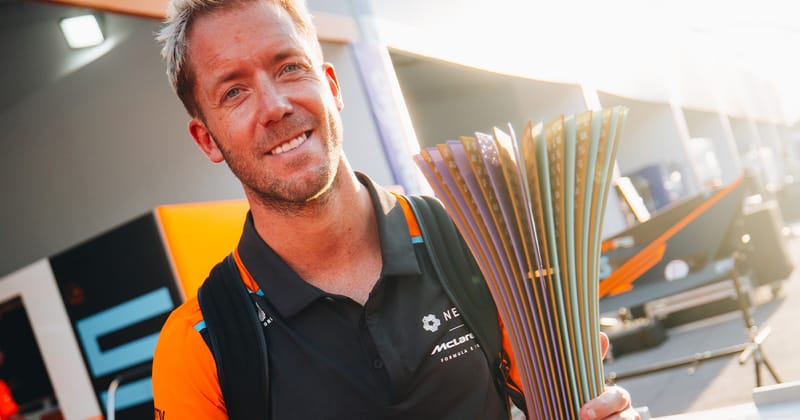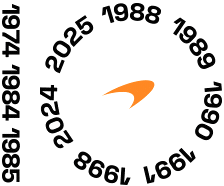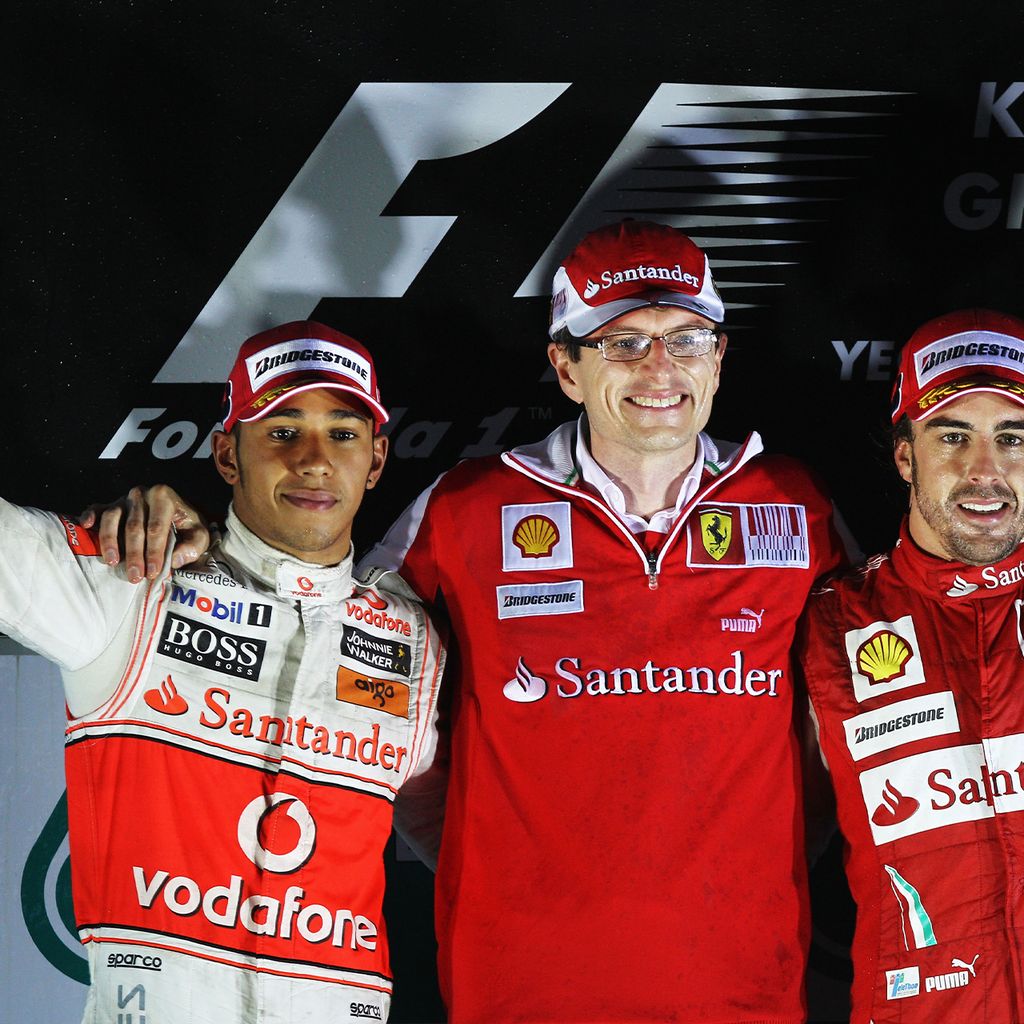
From foe to friend: Chris Dyer’s journey to NEOM McLAREN
Interview: Working with Schumacher and Räikkönen, battling with McLaren, and the differences between F1 and FE

Read time: 12 minutes
Long-time motorsport fans will likely know Chris Dyer as someone who competed against McLaren, leading Michael Schumacher and Kimi Räikkönen to a trio of Formula 1 titles for Ferrari, but nowadays the experienced engineer is part of the papaya fold.
Throughout his storied career, Chris has worked in Australia’s Supercars Championship, DTM, and F1, but he now serves as Technical Director at the NEOM McLaren Formula E Team.
Chris’ route to the Formula 1 paddock
After a few years at the Tom Walkinshaw-helmed Holden Racing Team in Australia, Chris followed Walkinshaw – who owned the Arrows F1 team – to Europe. There, he worked with Damon Hill and Jos Verstappen, but he soon approached Ross Brawn, then the technical director at Ferrari, about moving to the Italian team.
“I walked up to Ross during a Grand Prix weekend, and I had my CV in my pocket and a letter of introduction and surreptitiously slipped it into Ross's hand, saying: ‘I'd like to come and work for you. Give me a call if there's anything interesting going on’,” Chris recalls. “I then proceeded to pester Ross for the rest of that year whenever there was the opportunity to bump into him.”
When a job offer from Brawn did arise, the Australian jumped at it, moving to Italy to work with Ferrari and Michael Schumacher for the last of his championship titles.
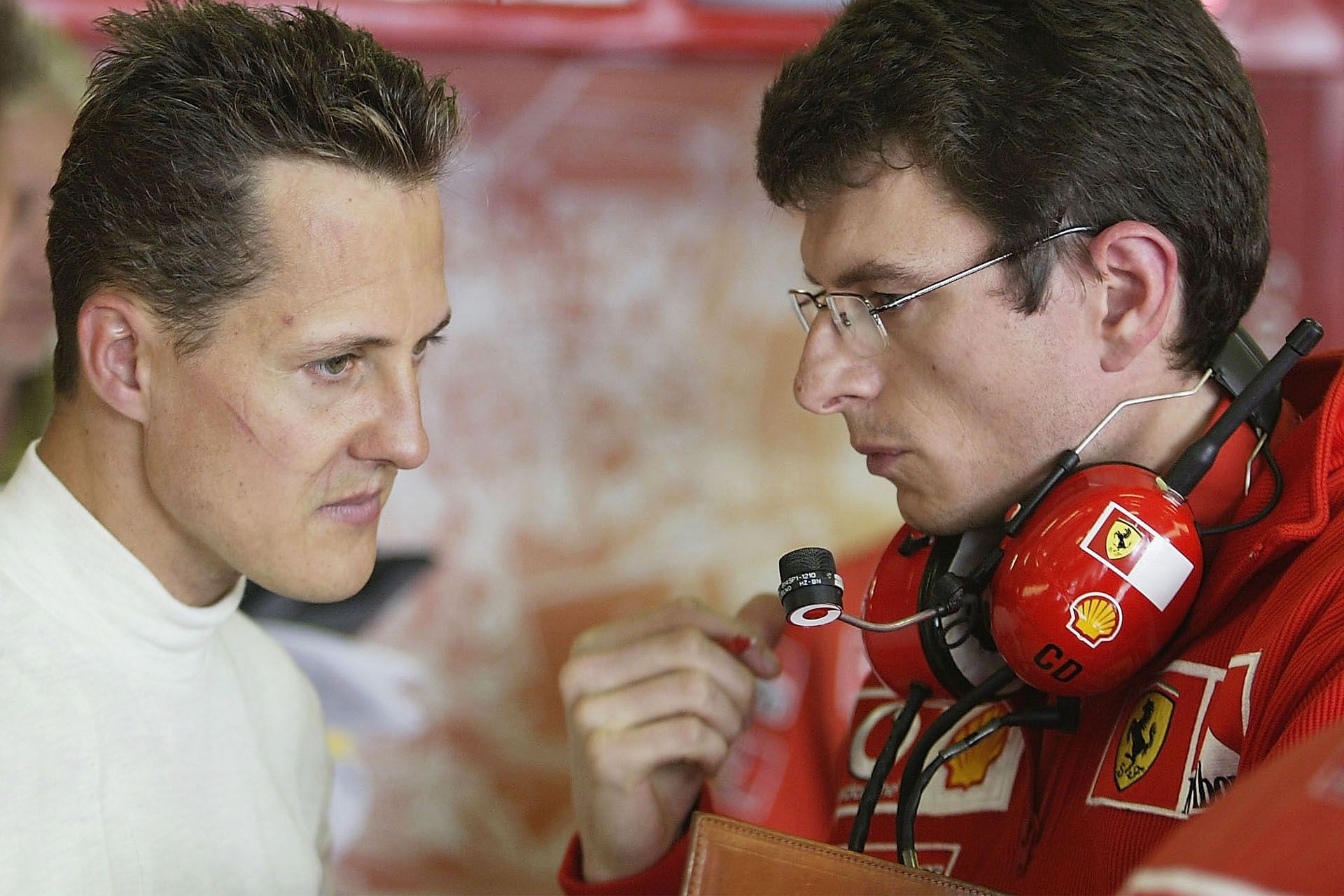
Michael Schumacher with his performance engineer Chris Dyer
“The timing was very fortuitous,” Chris says of the move. “They had a performance engineer who'd been working with Michael Schumacher for some time, who was leaving the team at the end of that year, and they were looking for somebody who could really settle straight in.
“I'd had a couple of years of race engineering experience and was prepared to step down again into a performance engineering role, so I think that was quite attractive to them, to have somebody that they felt had already a good idea of the bigger picture, and wasn't really going to be intimidated by stepping straight in and working with Michael.”
Battling with McLaren
After spending two years as Schumacher’s Performance Engineer, he transitioned to become his Race Engineer at the end of 2002. There, he helped Schumacher to his sixth and seventh titles, working with him up until to his first retirement. Chris went on to work with his replacement, Kimi Räikkönen, who moved to the team from McLaren in 2007.
“We had a great year in 2007, where we managed to snatch the title from under the nose of McLaren, who had had a somewhat difficult time juggling two very competitive drivers in Lewis [Hamilton] and Fernando [Alonso], which opened the door for us to sneak the title off them by one point at the final race.”
It was during this time that Ferrari and McLaren’s long-standing rivalry became particularly intense. Räikkönen snatched the title from under our noses in 2007, before Lewis Hamilton returned the favour a year later. Both were in the thick of the fight in Chris’ final year at Ferrari in 2010, too, but it was Red Bull who prevailed in yet another final-day showdown.
“I think we got payback from McLaren in 2008 because they managed to steal the Driver's title from Felipe at the very last moment,” he says. “Then in 2009, I hung up my stopwatch, moved from race engineering to overseeing the track engineering operations for Ferrari, so I did that through 2009 and 2010.”
Chris' F1 memories
Working with Andrea Stella
Going head-to-head with McLaren wasn’t Chris’ only link to McLaren during this period. While at Ferrari, Chris worked alongside Andrea Stella, now our F1 Team Principal. At the time, Andrea was an emerging talent, on a path to becoming Fernando Alonso’s Race Engineer, climbing the ladder alongside Chris.
“When I first arrived at Ferrari, Andrea was on the test team, where I started to work with him. When I moved up to Race Engineer, Andrea also took a step up,” Chris says. “When I moved from race engineering up into a more senior position, Andrea moved into that race engineering role.
“Andrea was a great example of the environment at Ferrari, which did a great job of developing young engineers. There were other people there at the same time, who are still at Ferrari in senior roles.
“Andrea was one of those young engineers who was clearly going to go far. Right from the beginning, he had a really fantastic attitude, not just in the way he worked, but he had that ability to look at the bigger picture - how he fitted into the team, how all the roles of the team fitted together, and how the relationship between drivers, engineers, and the factory site had to work together.
“It's not surprising that he's grown into that role at McLaren, because those abilities were there right from a very early stage, to take that big picture and understand how all the pieces had to fit together and how everybody had to work together to contribute to the success of the team.”
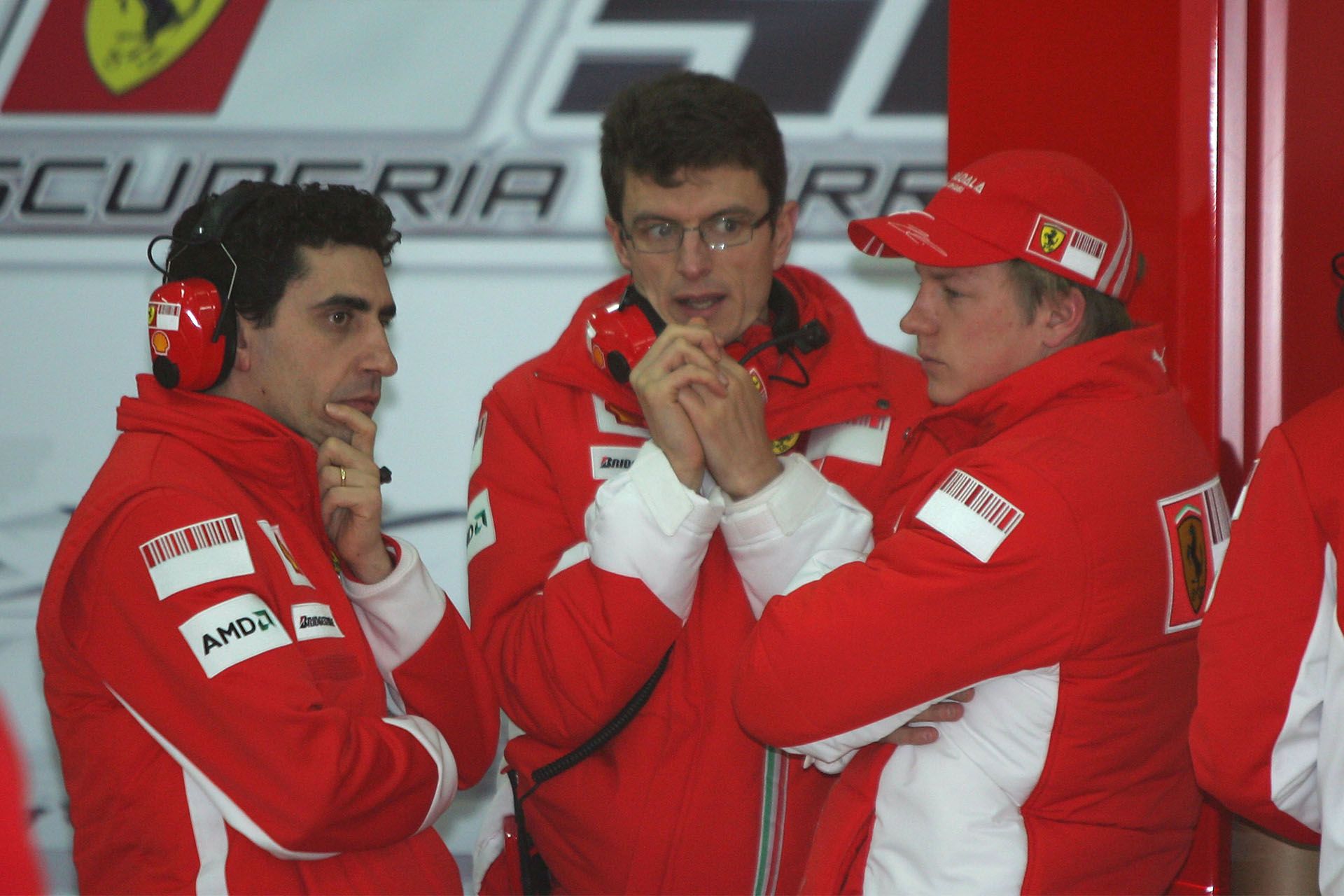
Andrea Stella, Chris Dyer, and Kimi in the F1 paddock
Chris’ journey to NEOM McLaren
While Andrea moved from Ferrari to McLaren directly, Chris took a different path. Following his departure from the team, Chris took a brief break from motorsport to study for an MBA, before he "went back to race cars with a roof", joining BMW Motorsport, where he was the team’s Chief Engineer in DTM. A spell in charge of Renault F1's vehicle performance group followed, before he arrived at NEOM McLaren Electric Racing at the end of 2022.
The move returned Chris to the single-seater realm but brought him into electric racing for the very first time. Not only that, but having held senior roles with several manufacturers, he was now at a customer team.
“Formula E is quite a different formula, and as a customer team at NEOM McLaren, we're not really designing the car, so it's much more about how we operate the car,” he explains. “The processes are very similar: we try to be a very data-focused operation in terms of the amount we rely on simulation. That is just as critical in Formula. E, maybe even more critical in the sense that we can't rely on building a better mousetrap because we're all pretty much in the same boat in terms of the cars.
“The focus is even more on the operational side than perhaps it is in F1. In F1, you need to put all the pieces together to be successful, but one of those factors is having a better mousetrap, building a car that's better than the competition. We don't really have that luxury here, so it’s very focused on operations.”
“Andrea was one of those young engineers who was clearly going to go far. Right from the beginning, he had a really fantastic attitude”
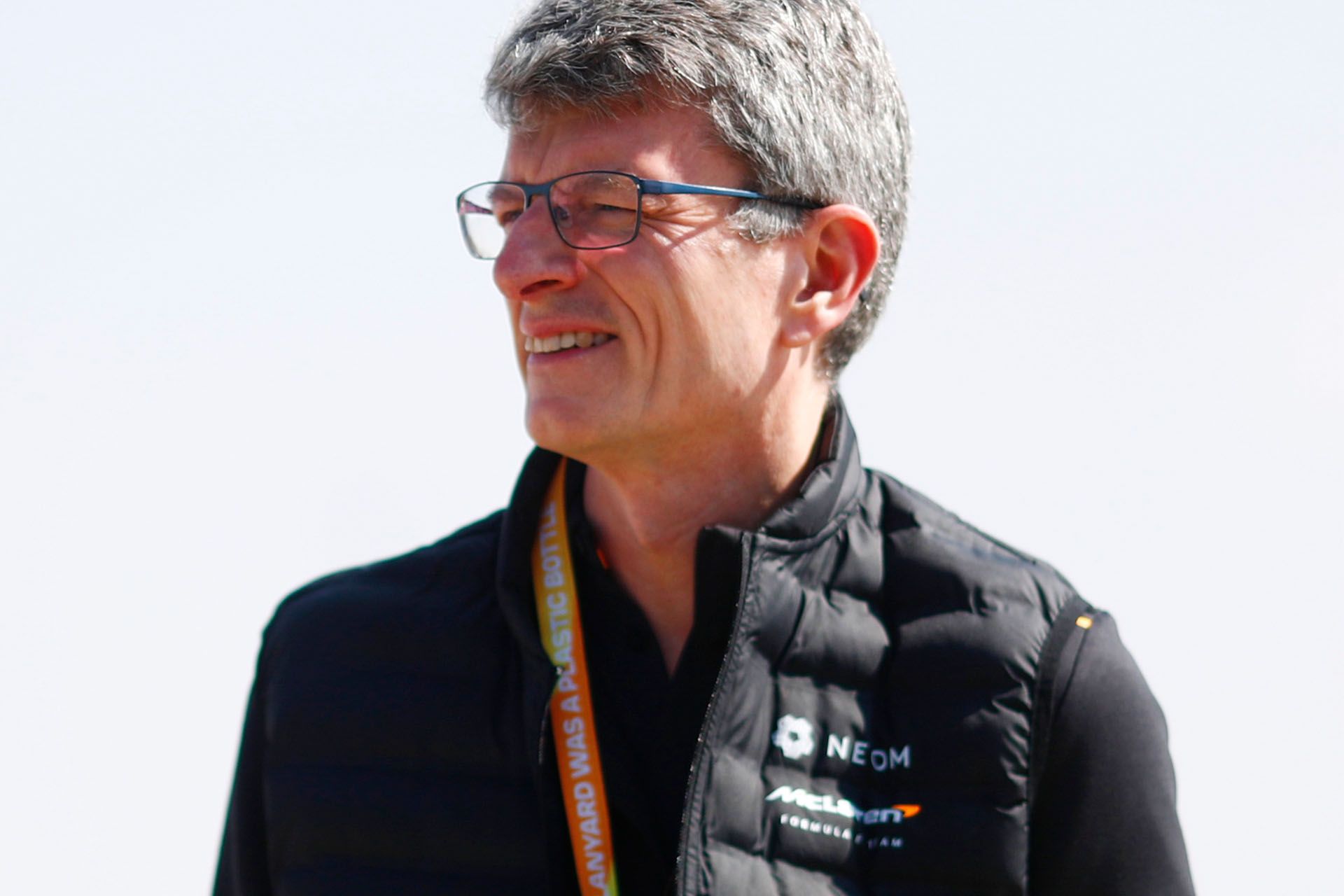
Chris Dyer
Technical Director, NEOM McLaren Formula E Team
Despite the obvious differences, when it comes to racing, there are similarities between the two formulas.
“The management through a race weekend is also very similar,” Chris points out. “Extracting the best performance out of the tyres in Qualifying and then through the longer runs of the race is key to being successful, and the process is very similar from my experience in F1.
“Both Formula 1 and Formula E are working under a cost cap, and you really have to look at every euro we spend under the cost cap and try to understand whether we're getting the value for money out of that spend.
“That's constantly evolving. It's not a decision you make once, and then it's set in stone for the next five years. It's a constant juggle, and it's very similar to the situation in F1 nowadays, where you have to be very careful about where you spend your resources.”
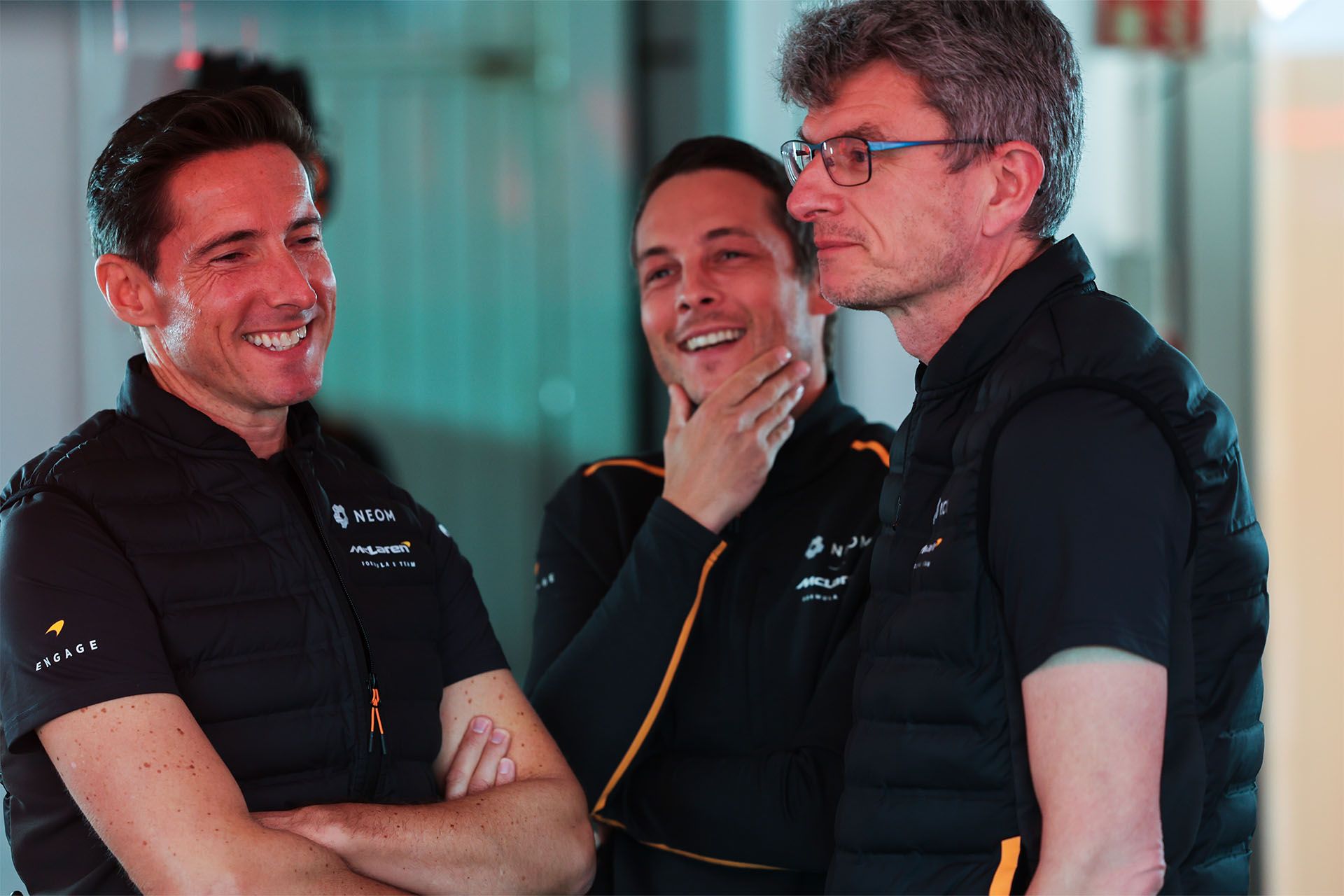
The NEOM McLaren Formula E Team after a podium finish in Jeddah
Unlike F1, Formula E also has a personnel restriction, further increasing the importance of efficiency.
“The team is smaller, but we have less to look at,” he says. “People and their time are limited, so we need to make sure their efforts are focused on the right things.
“Adding automation, which can allow an engineer to make an analysis in five minutes rather than 15 minutes, is a big part of what we do as well. Every five minutes we free up is five minutes somebody can now spend thinking about more performance.”
There’s a development race in both series. This is more obvious in F1, where you can physically see the car parts changing, while the progress in Formula E is more incognito.
“One of the areas that is a little bit freer in Formula E is software development,” Chris says. “We don't have that completely in our own hands, but we work very closely with our manufacturer on developing our software.
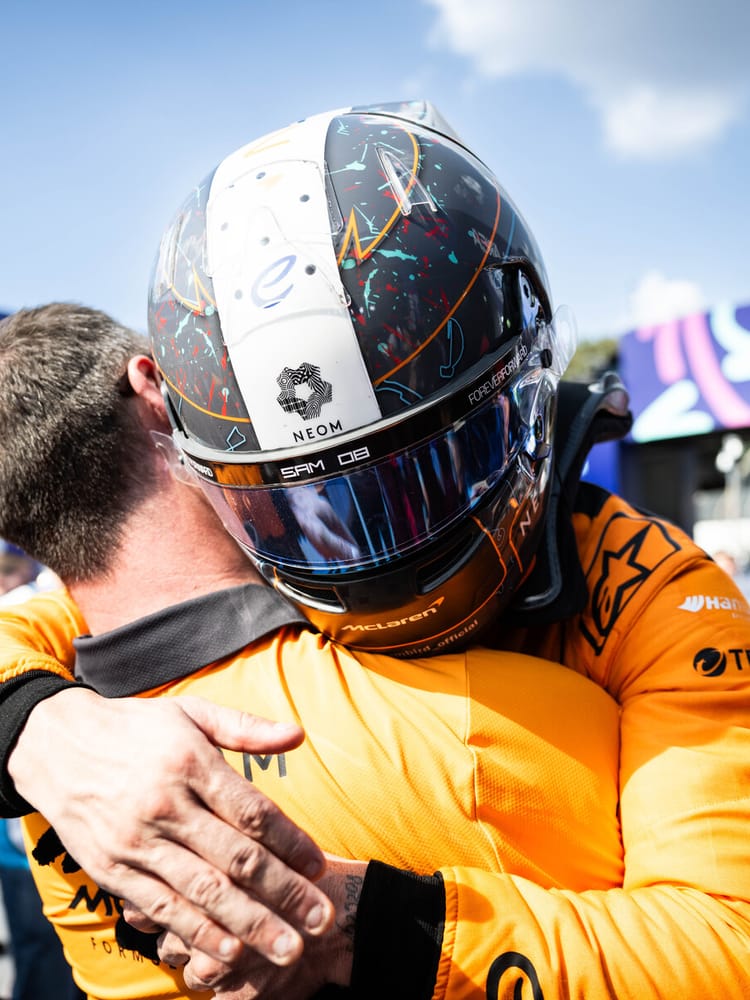
Join the family
“Software in Formula E is a bit like aerodynamics in Formula 1. We're not bringing a new front wing to every race or every second race, but we are bringing new software to pretty much every race. There's performance in terms of improving the efficiency of the car, and then actually being able to extract more performance from the car.”
It’s been a whole new world for Chris, albeit one with a number of familiar facets, and he’s been enjoying the challenge.
“It's a really exciting championship,” he says. “Electric racing is a super interesting challenge, and it's also a great example of the bigger picture, with the way the world is going and the problems we face in terms of the bigger picture of climate change.
“Electric motorsport is just one little part of that picture of saying, ‘we don't have to give up going racing. We can go racing in a slightly different way, and it's still an exciting challenge and it’s still an exciting show.”
RELATED ARTICLES
Latest news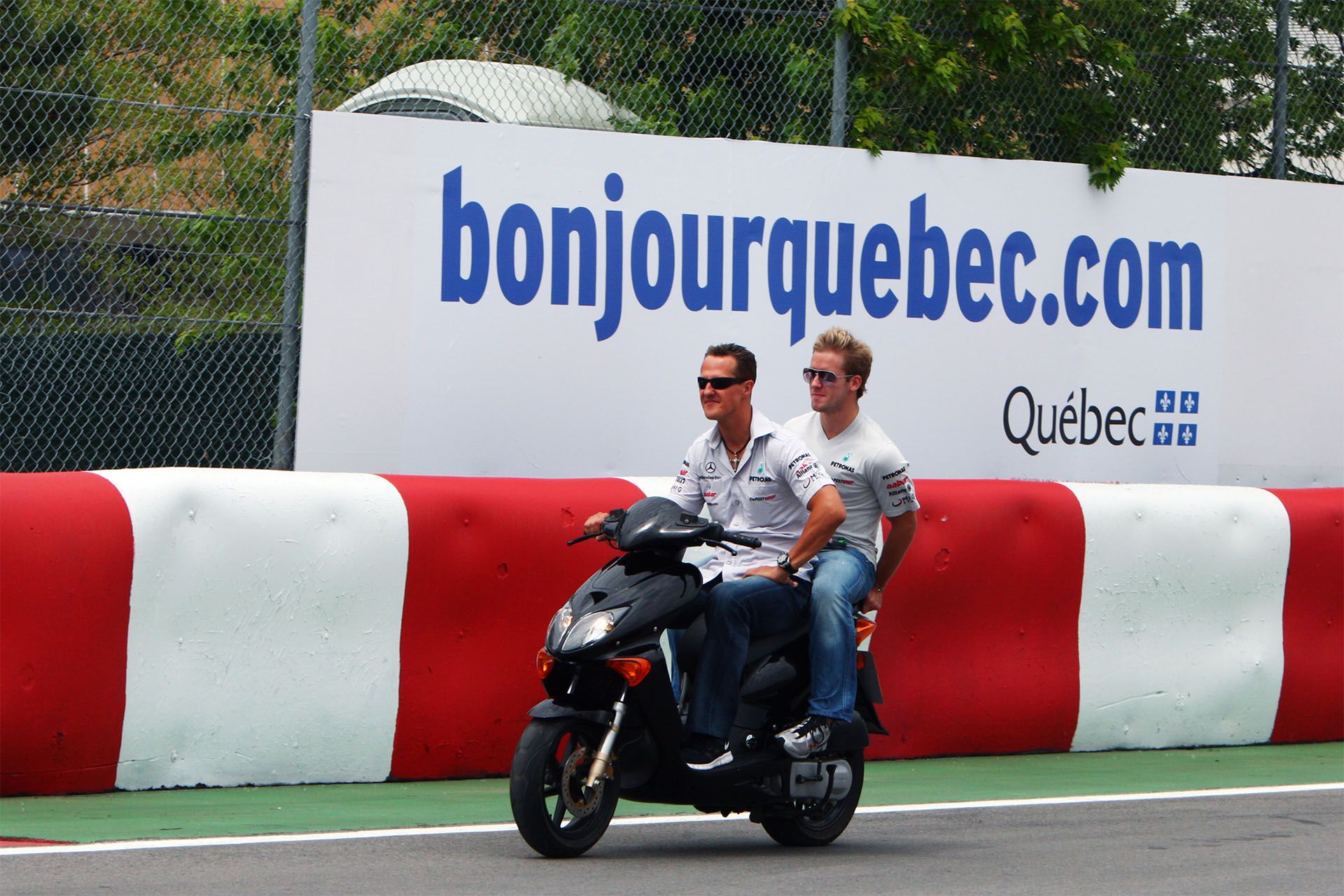
Sam Bird’s F1 years: Lessons from Schumacher
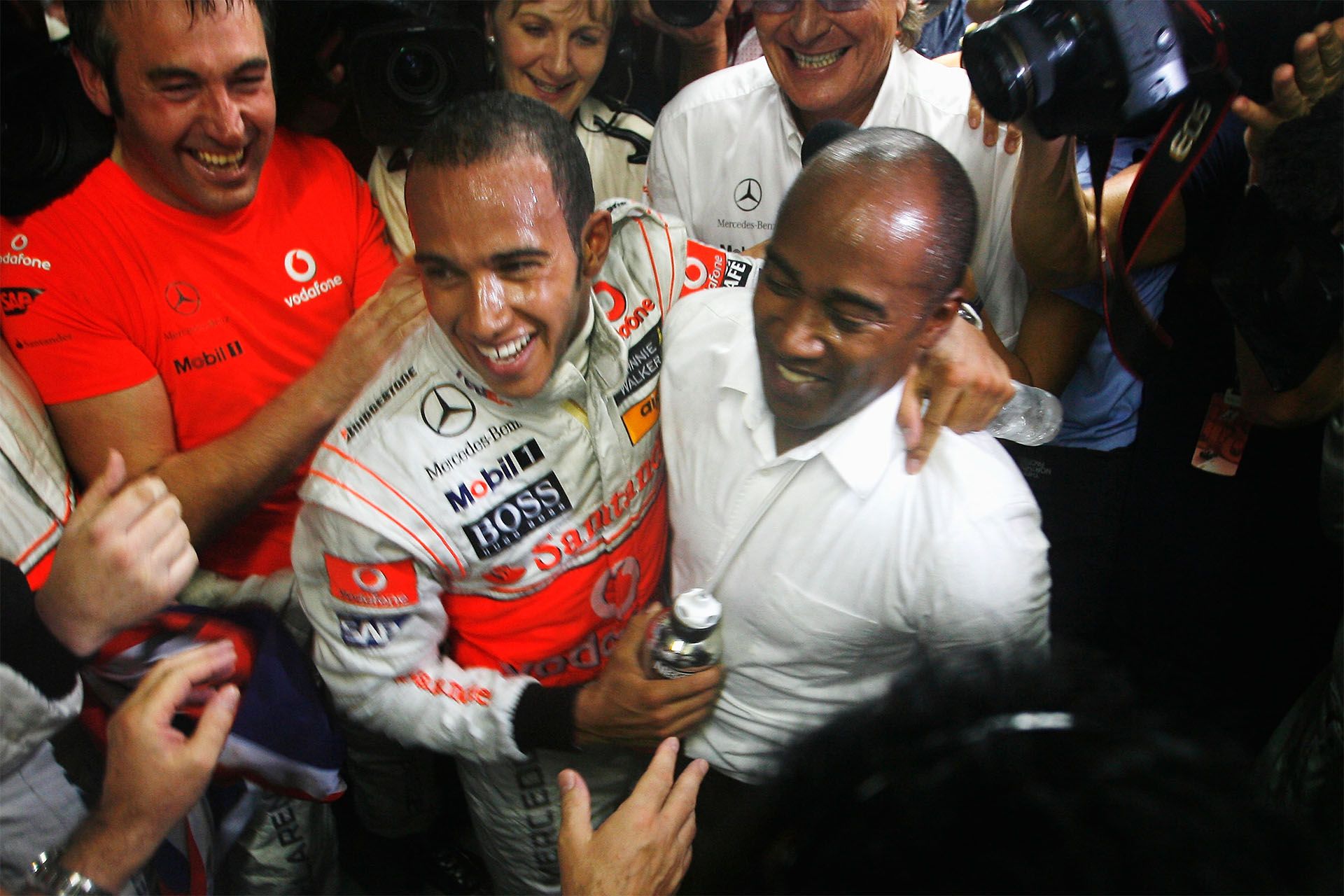
How good actually were McLaren and Lewis Hamilton in the 2008 Formula 1 season?
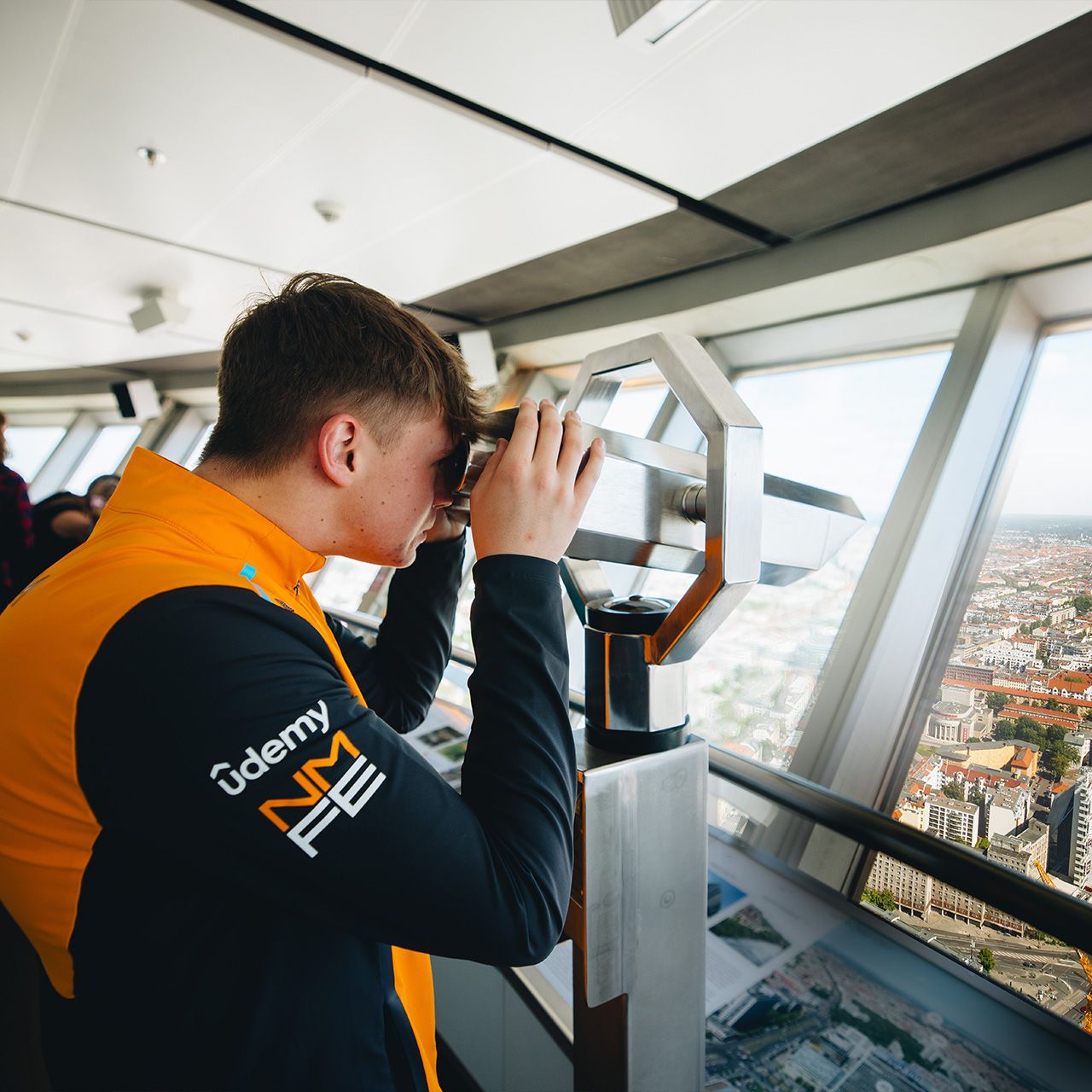
Your guide to the Berlin E-Prix

Taylor-made: how NEOM McLaren’s young rookie effortlessly took to Formula E
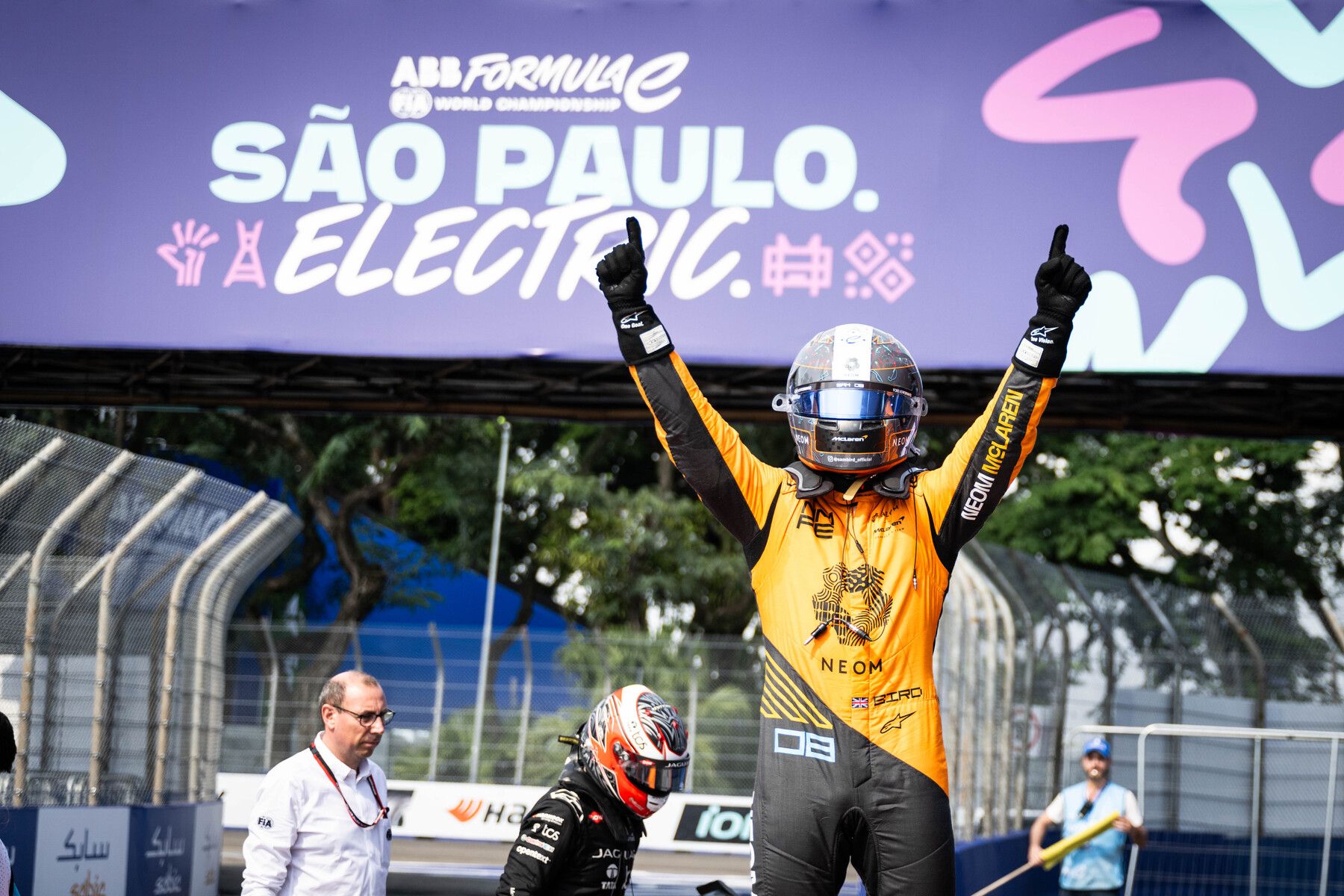
WATCH: Sam Bird on McLaren's first win in Formula E

“It's a very different way of driving" - Alex Dunne on his desert debut

A McLaren fan's guide: Formula E
